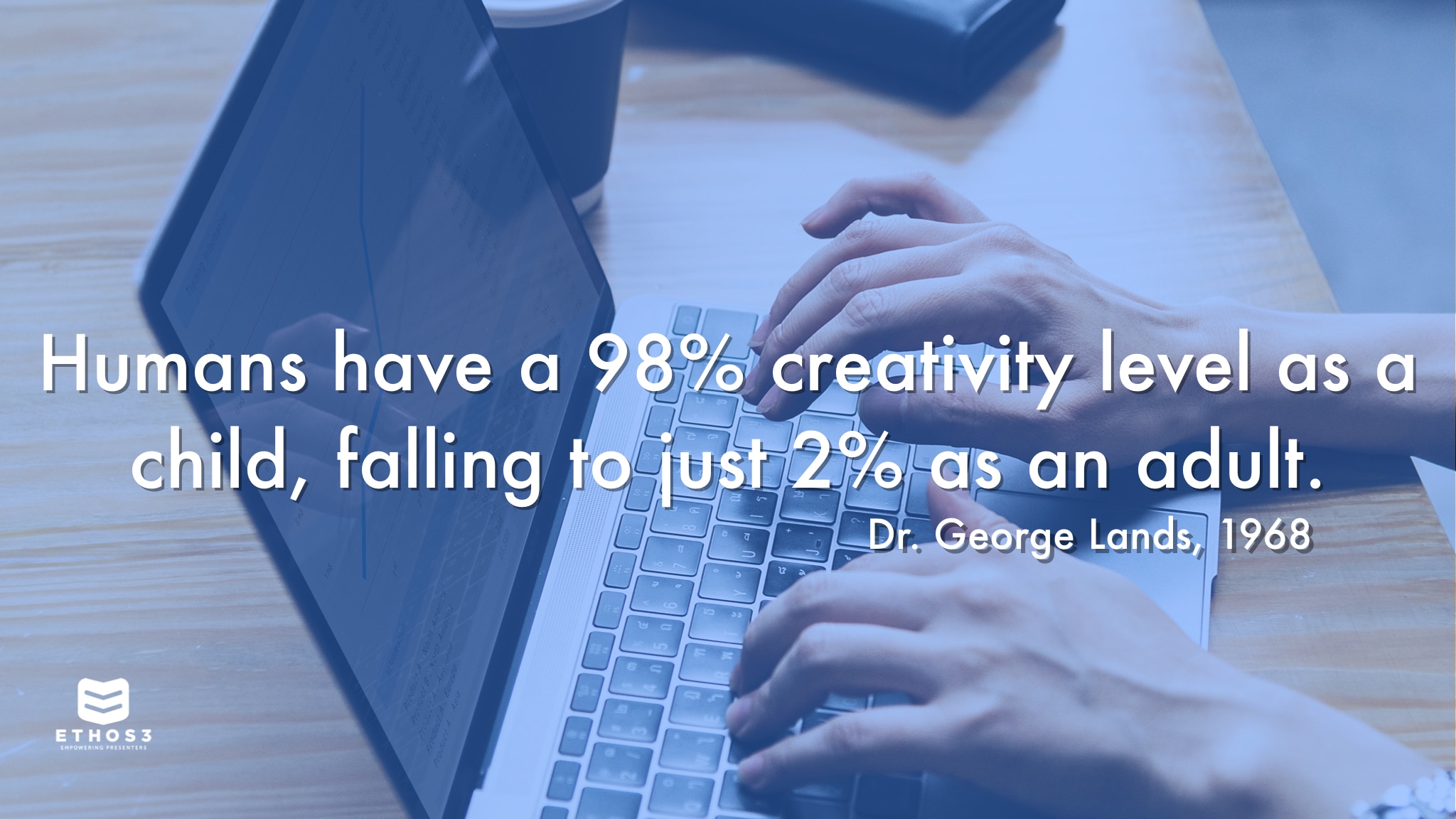One of my favorite short films of all time is the Pixar short titled “Alike.” In this short, we see how the monotony of our daily lives and the societal push to fit into cultural norms slowly eliminates the creative mind that we are all born with.
In 1968, George Lands performed a study on a group of kids starting at age 3 and continuing until age 15. He discovered that at age 3, kids tested at 98% creativity, dropping to 30% at age 5, and then dropping again to just 12% by age 15. Lands also tested more than 200,000 adults and found that by adulthood, creativity had fallen to just 2%. What Lands concluded is that even though the common belief is that creativity is a learned behavior, it is actually quite the opposite. He discovered that we are all born creative, but that we learn “non-creative” behavior as we grow.
Somewhere along the line, we as a society decided that creativity is not important. However, in our current culture, there is a trend that is standing in stark contrast to this old-school belief. In fact, creativity is no longer seen as a skill reserved for artists and musicians; instead, it is being regarded as a vital skill in the marketplace with top businesses in the world instituting the “20% rule.” This means that they are encouraging their employees to set aside 20% of their work time for exploring new ideas and thinking creatively.
As a presenter, creativity is a vital part of crafting and designing a great presentation. We must make the effort to fight against the “non-creative” behavior and flex our creative muscles.
Just like any skill, improving our creativity takes work. Below are 3 ways to practice your creativity and make it part of your everyday life.

Give yourself space to create.
One of the biggest hindrances to flexing our creative muscles is how little time we have in our schedules. I hear it all the time: “I would love to write that blog, design that presentation, create that new idea, x, y, z but I just don’t have the time.” If we want to become more creative and, in turn, better presenters and designers, we have to make space to do just that. We schedule everything else in our lives, so why not schedule time to dream, create, and design something for no other reason than to flex your creative muscles?
Do something that you’re bad at.
Sometimes the best way to practice your creativity is to find something you are really bad at and go do it. By trying something that doesn’t come easily, you are forcing your brain to come up with creative solutions that you may not have otherwise come up with. I’m possibly the worst artist of all time, so when it’s time for me to practice my creativity, I pick up a pencil and try to draw something. It doesn’t have to be anything complicated – just something that will force you to turn off auto pilot and work hard.
Find something you are passionate about and go do it.
When you find something you’re passionate about, it is difficult not to spend time thinking and dreaming about ways to be involved. If you can leverage this drive with a creative avenue, you will create a powerful ecosystem where exercising your creativity is not a chore but instead a pleasure.
Creativity is no longer reserved for artists and musicians. Instead, it is a vital part of humanity as a whole. As presenters, we must live in both the creative and logical worlds and bridge the gap between them. If you have not taken time to practice your creativity, you won’t be able to leverage it in your presentations. So, start today and see what accessing your creativity can do for you.
Unsure of where to start? Let us help. Ethos3 has a team of creative storytellers and designers who would love to work with you to create your next presentation.